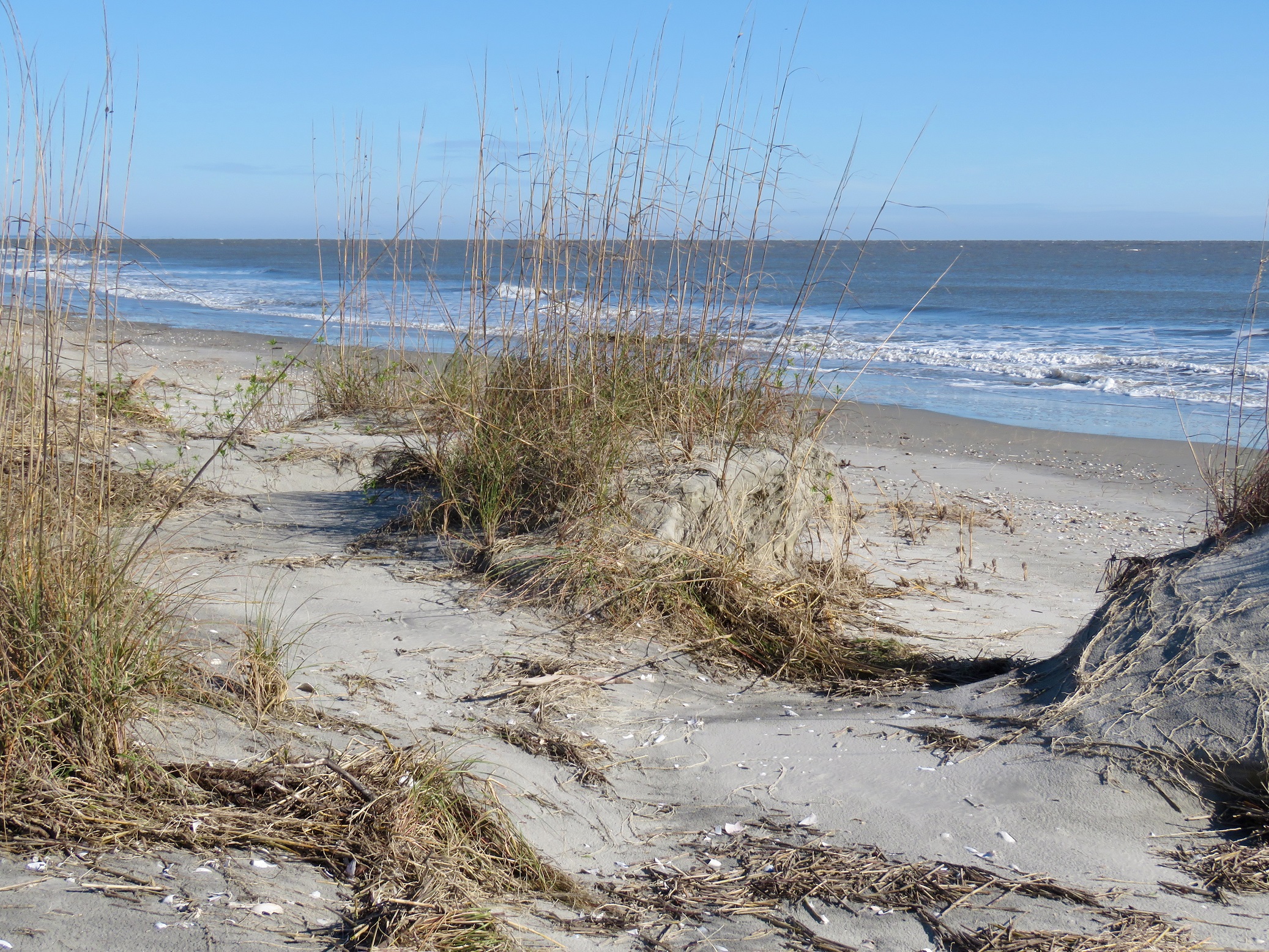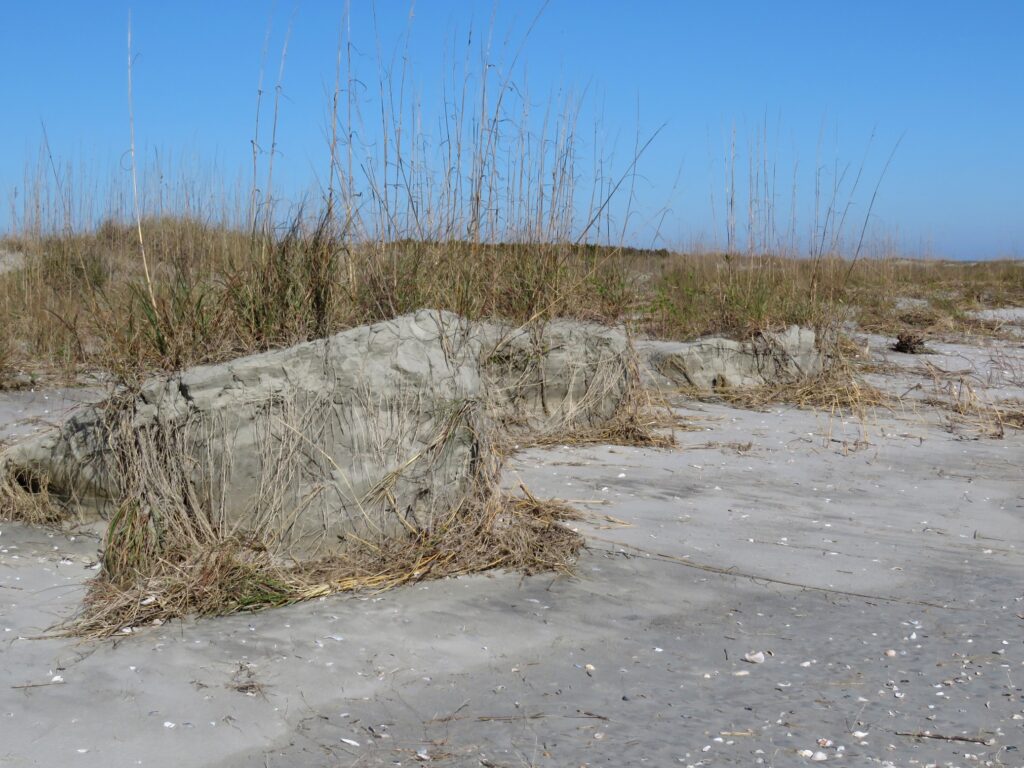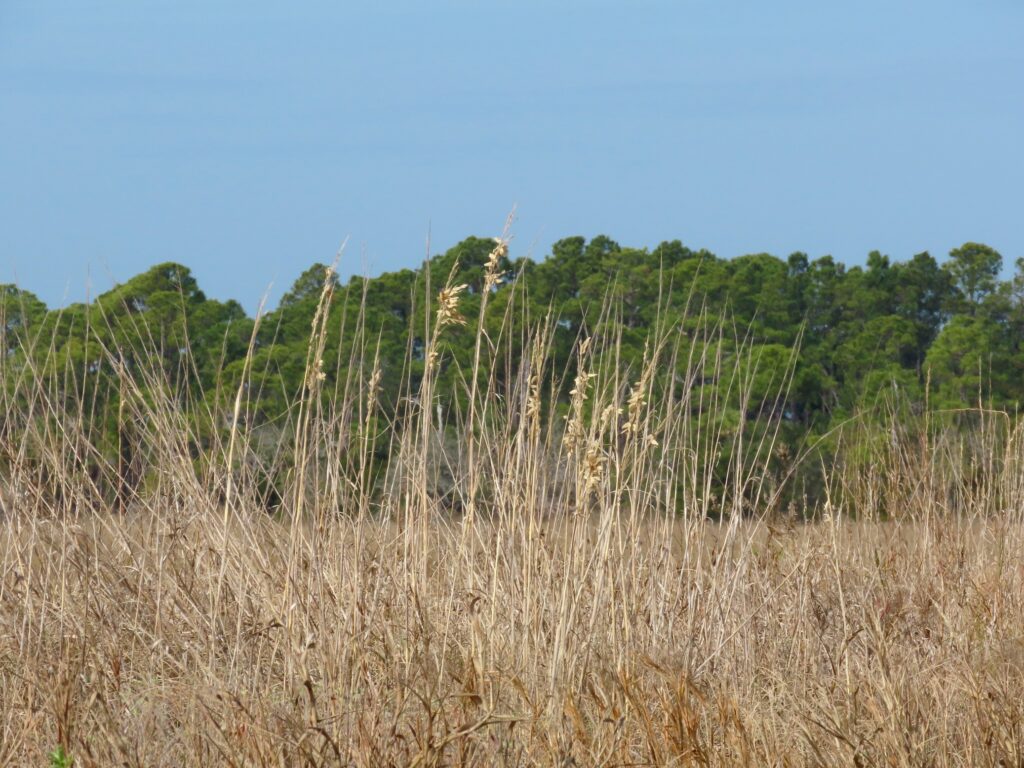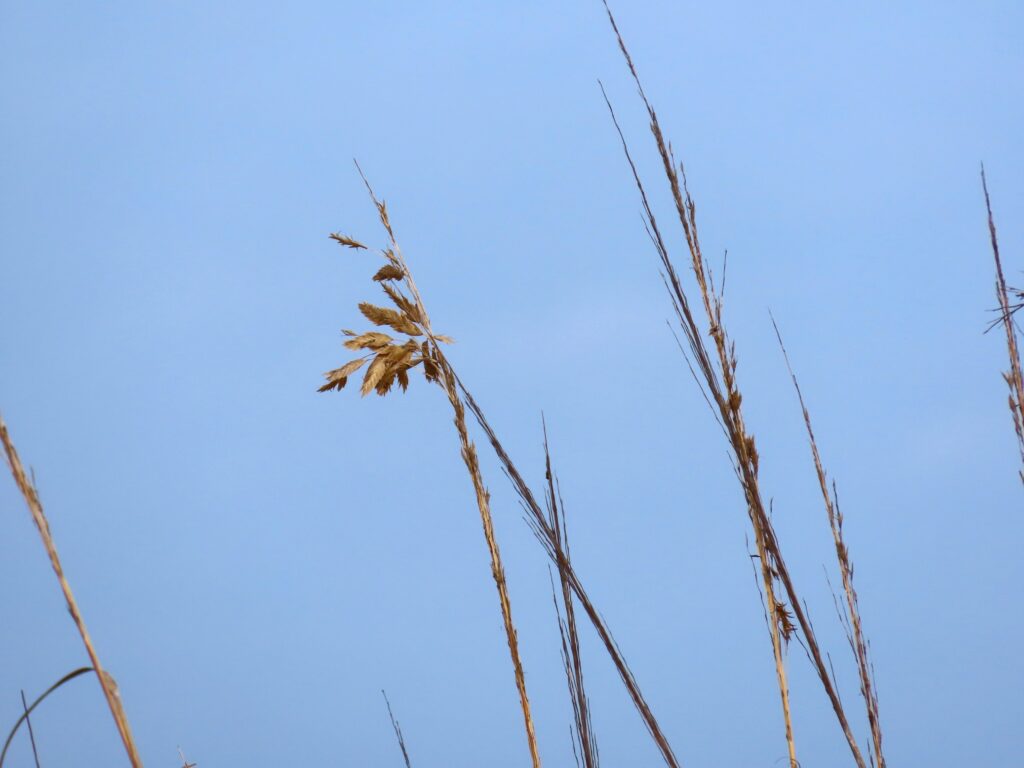




This week for Flora and Fauna Friday it’s the banner of the beach, Sea-Oats (Uniola paniculata).
Sea-Oats are a perennial species of grass native to the Atlantic Seaboard from the Chesapeake Bay south. It grows in clonal colonies with clumping bunches of blades arching up below knee-height. Those blades take on a bluish hue across its calico collage of young yellow-green and aged khaki-tan leaves. In winter it withers to a monotone khaki cast of foliage. But, its most defining feature is its flowers and fruits. The flower stalks of Sea-Oats reach high above the dunes, up to some seven feet in height. A singular stem crowned in a panicle of pendulous flattened flowers fluttering to and fro. A shape that inspires comparison to fertile fields of cultivated Oats (Avena sativa). These are wind-pollinated grass flowers, so showy is not their goal, but pleasing aesthetics emerged nonetheless. As the winds whip and blow along the shore, it pollinates these flowers before finally flinging their seeds sideways along the sands.
Sea-Oats live their lives on the narrowest of margins, just that thin strip of sand that constitutes our beach dune ecosystem. Beach dunes are one of the harshest environments for a plant that can be found in South Carolina. Beach sand retains next to no water and is nearly devoid of certain necessary nutrients. Simultaneously, the near unceasing sea breeze and singeing salt spray will wring every drop of moisture from most any plant. Yet, Sea-Oats are among the select few that can not only tolerate, but thrive in this hostile environment. Beyond even that, it’s what builds and bolsters these dunes to begin with. Sea-Oats are what we call an ecosystem engineer. Barrier island ecosystems, and in particular the beach dune systems, are contenders for having the most dynamic conditions of any natural environment. From year to year islands vanish and appear, beaches stretch and shrink, the water line ebbs and flows, inlets open and close, and dunes roll and fold atop themselves like a mirror of the surf in slow motion. Sea-Oats bring a semblance of stability to the chaos of the coast. Their expansive, fibrous roots grow out and down while their leaves grow upward and interlocking to raise a natural series of sand fences that intercept windblown sand and trap it beneath their net-like root system. This serves to build the dunes up over time and then anchors their shifting sands in place. This allows the dunes to resist erosion from the persistent slashing of wind and lapping of tides as well as the sudden smothering of a storm surge. This stability allows Sea-Oats to persist from year to year and lets them pour the semblance of a foundation for an ecosystem to build up around them.